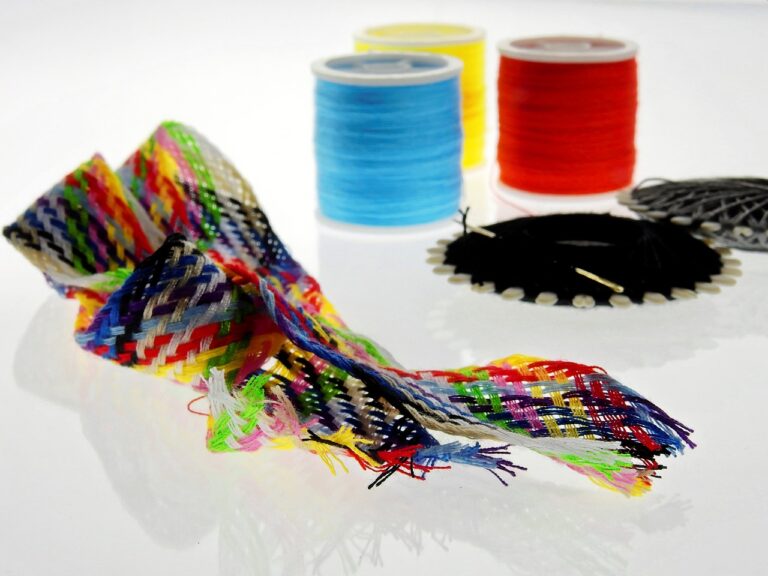The Role of Fashion in Cultural Appropriation: Navigating Sensitive Style Choices
Cultural appropriation in the realm of fashion involves adopting elements of a culture without understanding or respecting their significance. This can often lead to trivializing sacred symbols or traditional practices of a marginalized community. When designers or individuals appropriate cultural elements for aesthetic purposes without acknowledgement or permission, it can perpetuate harmful stereotypes and erase the true meaning behind the symbols.
It’s crucial for individuals in the fashion industry and beyond to educate themselves on the cultural significance of the elements they incorporate into their designs. By learning about the history, traditions, and meanings behind different cultural symbols, designers can ensure that their creations are respectful and appreciative rather than appropriative. This not only promotes cultural understanding and appreciation but also helps in fostering a more inclusive and equitable fashion industry.
• Cultural appropriation in fashion involves adopting elements of a culture without understanding or respecting their significance
• This can lead to trivializing sacred symbols or traditional practices of marginalized communities
• Appropriating cultural elements for aesthetic purposes without acknowledgement can perpetuate harmful stereotypes and erase true meanings behind symbols
It is important for individuals in the fashion industry to educate themselves on the cultural significance of the elements they incorporate into their designs. By learning about history, traditions, and meanings behind different cultural symbols:
• Designers can ensure creations are respectful and appreciative rather than appropriative
• Promotes cultural understanding and appreciation
• Fosters a more inclusive and equitable fashion industry
Recognizing Cultural Significance in Fashion
Fashion is not just about trends and aesthetics; it often serves as a reflection of the rich cultural heritage and traditions of various communities around the world. From intricate embroidery techniques to vibrant textile patterns, every design element in fashion has a story to tell. Understanding the cultural significance behind these fashion choices is crucial in appreciating the depth and meaning embedded in each garment.
When we acknowledge the cultural roots of certain fashion styles, we pave the way for a more inclusive and respectful fashion industry. By recognizing and celebrating the diverse influences that shape fashion, we honor the centuries-old traditions and craftsmanship of different cultures. It’s essential to look beyond the surface level of clothing and delve deeper into the meanings and histories behind each design to truly grasp the significance of cultural representation in fashion.
Impact of Fashion Choices on Marginalized Communities
Fashion choices have a profound impact on marginalized communities, often perpetuating stereotypes and erasing the cultural significance of certain garments or styles. When elements of a marginalized culture are used in a superficial or exploitative way without proper understanding or respect, it can lead to harm and misrepresentation.
Furthermore, when mainstream fashion brands appropriate designs or traditions from marginalized communities without giving credit or recognition, it not only undermines the original creators but also perpetuates a power dynamic where those in positions of privilege profit off the cultural heritage of others. This exploitation can contribute to the erasure of authentic representations of marginalized cultures in the fashion industry and society at large.
What is cultural appropriation in the context of fashion?
Cultural appropriation in fashion refers to the act of taking elements of one culture and using them in a disrespectful or exploitative way without understanding or acknowledging the cultural significance behind them.
How can individuals recognize cultural significance in fashion?
Individuals can recognize cultural significance in fashion by educating themselves on the history and meaning behind different cultural styles, patterns, and symbols. It’s important to appreciate and respect the origins of these elements.
How do fashion choices impact marginalized communities?
Fashion choices can impact marginalized communities in several ways, such as perpetuating stereotypes, erasing cultural identities, and contributing to the exploitation of traditional knowledge and designs without proper credit or compensation.
What can individuals do to support marginalized communities in the fashion industry?
Individuals can support marginalized communities in the fashion industry by amplifying diverse voices, advocating for fair representation and inclusion, and patronizing brands that prioritize ethical practices and cultural appreciation. It’s important to be mindful of the impact of our fashion choices on marginalized communities.







